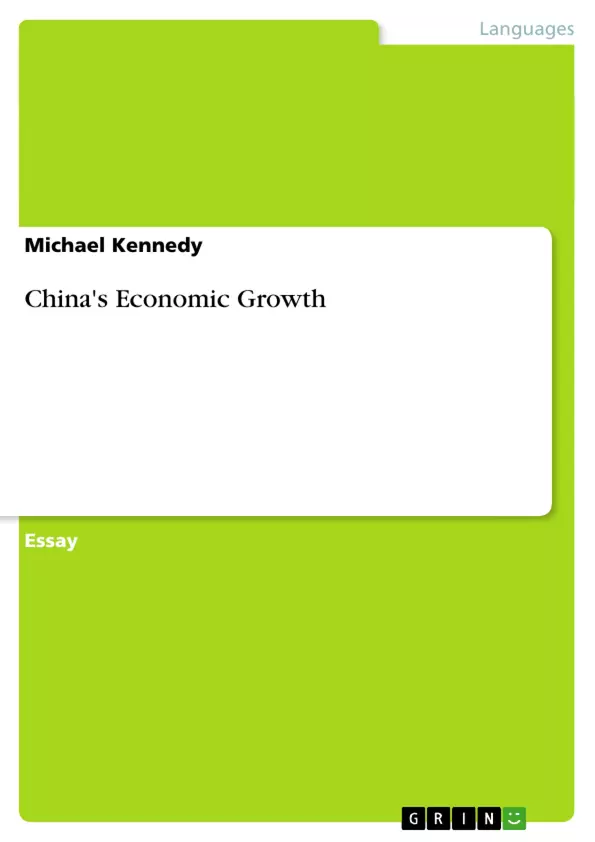The debate whether China’s economic growth can be considered a miracle or a myth is a complicated one. China has experienced a considerable economic boom it reformed its economy following 1978. Reforms led to the liberalization of China’s economy, brought about rapid urban development, and increased the middle class base allowing for its political and economic influence throughout the world to flourish. Some believe – and some fear – that China’s dramatic and speedy rise will advance it to a point, surpassing the United States as the world’s leading economic superpower. However, with a closer examination, it becomes evident that this may be unlikely as China is heavily dependent on developed Western states, such as the United States, for the raw materials it needs to feed its manufacturing industry. Furthermore, by 2003, fifty-five percent (Gilboy 2004) of China’s exports were from foreign funded enterprises. Therefore, China’s economic rise is not a miracle, but rather a result of opening trade barriers to businesses from advanced countries which want to take advantage of China’s inexpensive manufacturing sector.
Inhaltsverzeichnis (Table of Contents)
- China's Economic Growth
- Is China's Rise a Miracle or a Myth?
- China's Lack of a High-Tech Domestic Industry
- Factors Affecting China's High-Tech Sector
- Environmental and Social Issues
- Population Size and Aging
- Corruption in Government and Business
Zielsetzung und Themenschwerpunkte (Objectives and Key Themes)
This discussion paper aims to analyze the complexities of China's economic growth, examining whether it can be considered a miracle or a myth. It delves into the factors contributing to China's economic progress, particularly its dependence on foreign investment and its challenges in developing a strong high-tech domestic industry. The paper also explores the role of political culture, environmental issues, population dynamics, and corruption in shaping China's economic trajectory.- China's Economic Growth and its Dependence on Foreign Investment
- The Lack of a Strong High-Tech Domestic Industry in China
- The Role of Political Culture in Economic Development
- Environmental and Social Challenges Facing China's Economy
- The Impact of Population Dynamics and Corruption on Economic Stability
Zusammenfassung der Kapitel (Chapter Summaries)
This paper begins by examining the debate surrounding China's economic growth, presenting arguments both for and against considering it a miracle. It highlights China's rapid economic boom since 1978, attributing it to economic liberalization, urban development, and the rise of the middle class. However, it also emphasizes China's reliance on Western developed states for raw materials and its reliance on foreign-funded enterprises for manufacturing. The paper then explores China's lack of a strong high-tech domestic industry, arguing that it continues to rely on imports of advanced technology from Western countries. It analyzes the reasons behind this, including the limitations of China's educational system, the political culture that stifles innovation, and the challenges posed by environmental degradation. Finally, the paper examines the impact of population dynamics and corruption on China's economic stability. It highlights the concerns regarding the aging population, the reduction in young workers, and the challenges associated with China's one-child policy. It also discusses the significant economic costs of corruption and its impact on foreign investment and the country's reputation.Schlüsselwörter (Keywords)
This discussion paper focuses on key concepts related to China's economic development, including: economic growth, foreign investment, high-tech industry, political culture, environmental issues, population dynamics, corruption, and sustainable growth.- Quote paper
- Michael Kennedy (Author), 2013, China's Economic Growth, Munich, GRIN Verlag, https://www.grin.com/document/268263



